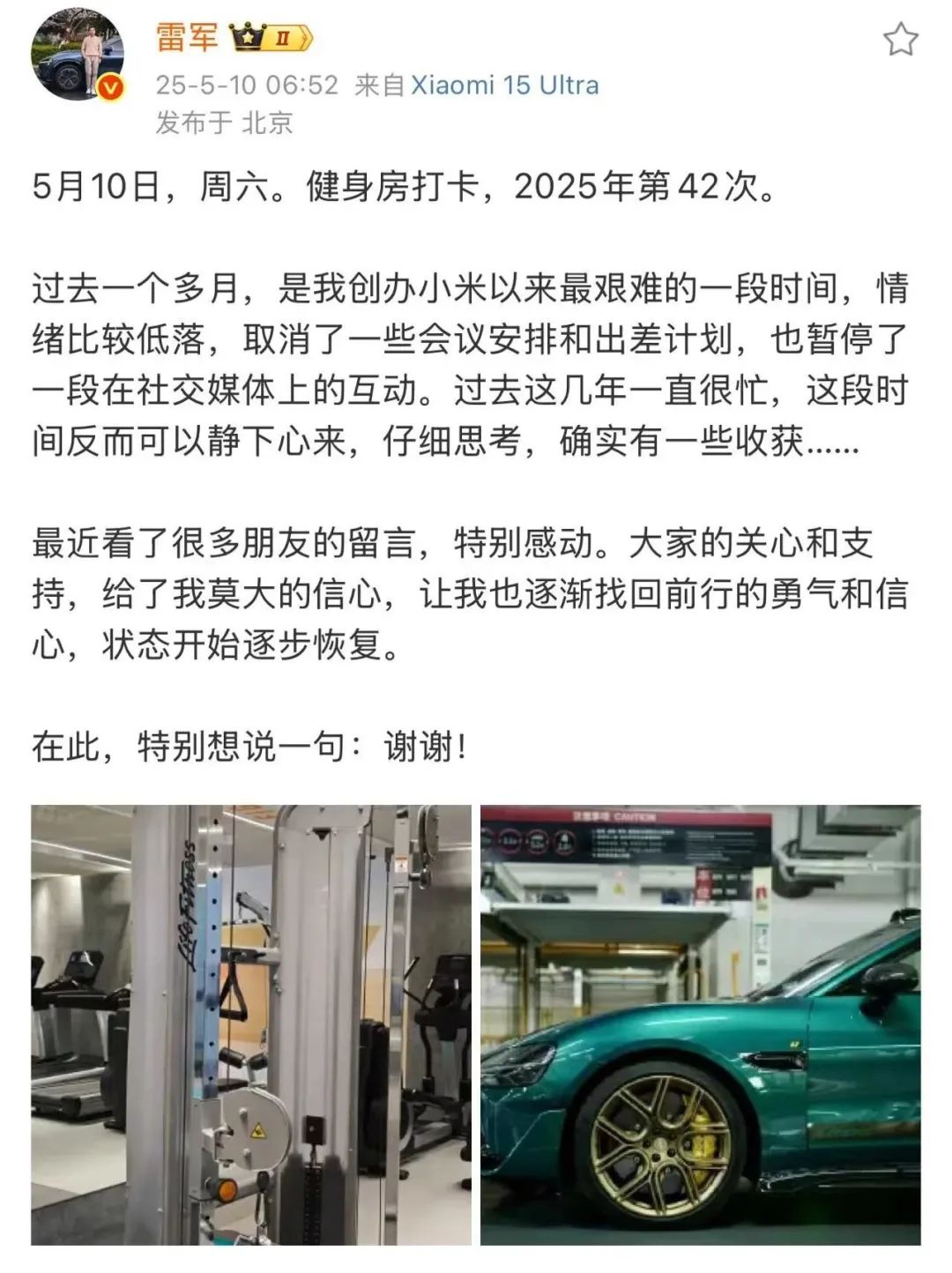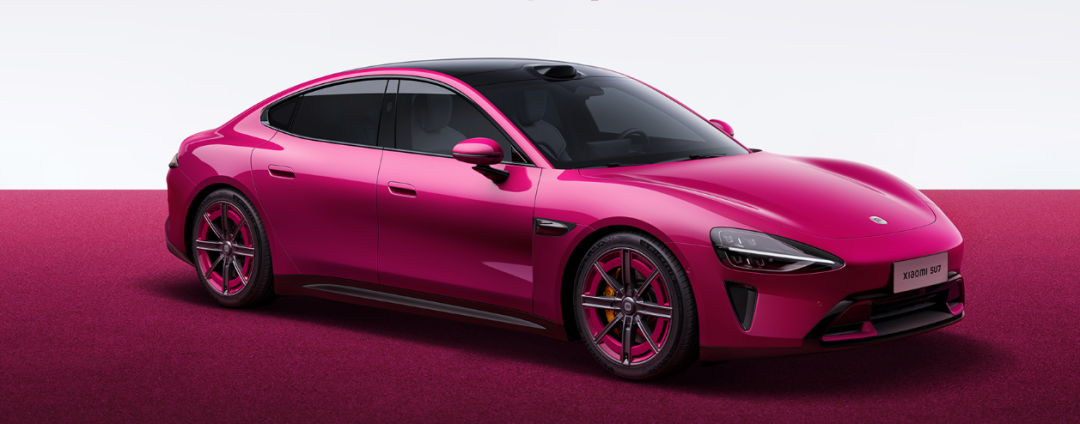Xiaomi Auto's Challenges Far From Over
![]() 05/14 2025
05/14 2025
![]() 568
568
The Traffic Conundrum: A Double-Edged Sword
Xiaomi Auto, perched atop the pinnacle of public attention, now grapples with the repercussions of its soaring popularity.
On May 10, Lei Jun, founder, chairman, and CEO of Xiaomi Group, posted on his personal Weibo, "The past month has been the most trying since Xiaomi's inception. I've been in a low mood, canceled meetings and business trips, and paused social media interactions." This marks Lei Jun's first public statement since the Xiaomi SU7 incident, underscoring the gravity of Xiaomi Auto's current predicament.

Image source: Sina Weibo @Lei Jun
From the Xiaomi SU7's high-speed intelligent driving accident to horsepower limitations and suspicions of false advertising concerning the carbon fiber hood, crises have mounted, indicating that Xiaomi's "darkest hour" is far from over.
One Crisis After Another
Xiaomi Auto faces wave after wave of public scrutiny, with the fuse lit on March 29, 2025. On that day, a Xiaomi SU7 Standard Edition engaged in an accident while in NOA intelligent assisted driving mode on the Dezhou-Shangrao Expressway, claiming three lives.
On April 16, the Ministry of Industry and Information Technology held a meeting emphasizing the need for automakers to clarify system boundaries and safety measures, prohibit exaggeration and false advertising, and strictly fulfill their obligation to inform. Xiaomi subsequently altered "intelligent driving" to "assisted driving" in SU7 promotional materials, but the damage had already been done.
Adding insult to injury, Xiaomi then faced controversy over working hours. A Maimai user revealed that Xiaomi internally mandated an average workday of no less than 11.5 hours, with employees working fewer than 8 hours required to submit explanations, and those with lower hours facing interviews or potential termination. This news sparked criticism of Xiaomi's corporate culture and working environment, tarnishing its brand image as "user-friendly."
Yet, Xiaomi's trials do not end here, as allegations of false advertising have thrust it into the limelight.
Upon launch, the Xiaomi SU7 Ultra boasted a maximum horsepower of 1,548 hp, but the April 30, 1.7.0 version update restricted it to around 900 hp, unlockable only through specific track results. Car owners felt this infringed on their right to choose and diminished the product's value.
"We sincerely apologize for the inconvenience caused by adding unlocking conditions for the 'Ranking Mode' function in the previous update," Xiaomi Auto explained. The design aimed to ensure driving safety but failed to fully consult car owners or communicate the changes adequately.
Not only were car owners displeased with the "promise and then backtrack" on horsepower, but the first batch of SU7 Ultra models equipped with the carbon fiber hood also faced scrutiny.
At the SU7 Ultra's launch, Xiaomi officials and Lei Jun described the optional $42,000 carbon fiber dual-airflow hood as "laden with black technology." Lei Jun noted, "The carbon fiber hood alters not just the exterior but also the internal structure, with dual airflow directly guiding air to the hub, supporting hub cooling." Although he later deleted the hub cooling aspect, he retained the internal structure claim.
An SU7 Ultra owner who spent an extra $42,000 and waited months for the carbon fiber hood discovered that blowing air at the hood with a hairdryer left tissue paper placed on it completely still, casting doubt on the "dual airflow's" aerodynamic effect. Upon disassembly, some owners found that the so-called "dual airflow high-efficiency diversion" carbon fiber holes neither effectively guided air to the brake system nor generated downforce.
In response, Xiaomi Auto stated that the carbon fiber dual-airflow hood, besides replicating the exterior design, also aids in airflow export and front compartment cooling. "We deeply apologize for not clearly conveying this information earlier," Xiaomi Auto said. However, many car owners rejected this explanation, viewing it as an evasion of the core issue of insufficient functional practicality.
Currently, online car return groups have formed, with some owners even entrusting lawyers to defend their rights. Suspected joint video statements from multiple SU7 Ultra owners have also surfaced. In the three-minute video, dozens of owners display order screenshots and explicitly demand Xiaomi to take back their cars.
Amidst multiple crises, Xiaomi Auto's April delivery volume fell by 3%-4.25% month-on-month, marking its first negative growth. With the Xiaomi YU7 scheduled for June-July launch, swiftly repairing the brand image and rebuilding market confidence has become a pressing issue for Xiaomi Auto.
The Predicament of the Disruptor
Among domestic new-energy automakers, Xiaomi Auto's journey can be deemed smooth.
When Xiaomi Auto entered the market, China's new energy vehicle market penetration rate had surpassed 50%, with giants like BYD and Tesla setting technical barriers, and newcomers like NIO, XPeng, and Li Auto already occupying user mindshare. According to Lei Jun, Xiaomi has invested approximately 30 billion yuan in car manufacturing, encompassing R&D, store setup, employee expenses, and more.
Lei Jun once passionately spoke of "the last venture of his life," willing to stake his reputation and achievements on Xiaomi Auto. Xiaomi's foray into car making, to some extent, mirrors its past success in mobile phones, emphasizing performance and cost-effectiveness—strategies proven in the mobile market and evident in Xiaomi Auto.
Xiaomi has indeed achieved enviable results—with just the Xiaomi SU7 model, it has ascended to the first tier of domestic new-energy automakers. On March 18, Xiaomi Auto announced the delivery of its 200,000th vehicle in less than a year, making it the fastest domestic brand to reach this milestone.

Image source: Xiaomi Auto
However, cars and mobile phones serve vastly different purposes. When Lei Jun touts the SU7's performance comparable to or exceeding supercars, users may inadvertently drive at speeds exceeding 150 km/h on ordinary roads. Similarly, when Xiaomi showcases intelligent driving posters and demo videos suggesting nationwide usability, users may misconstrue the SU7 as fully autonomous. Both extreme acceleration and intelligent driving raise safety concerns, and the weight of human life cannot be overstated. Xiaomi, which disrupted the mobile phone industry with "cost-effectiveness" 15 years ago, must now prioritize "safety and reverence" in the automotive sector.
Lei Jun and Xiaomi's exceptional marketing prowess have garnered Xiaomi Auto overwhelming attention and unparalleled sales. However, this intense spotlight also subjects every step of Xiaomi Auto's development to rigorous scrutiny from consumers and media. Traffic is indeed a double-edged sword; while Xiaomi Auto enjoys high visibility, it also bears the brunt of its repercussions.
Lei Jun once stated that Xiaomi Auto aims to become one of the top five global automotive companies within 15-20 years. However, in the marathon of the automotive industry, reliance solely on marketing is inadequate. Product quality and honest management are the cornerstones for long-term success.
Whether Xiaomi Auto can transition from a "phenomenal hit" to a "sustainable giant" hinges on its ability to uphold user trust and technical reverence amid rapid growth—perhaps more crucial than mere sales figures.








